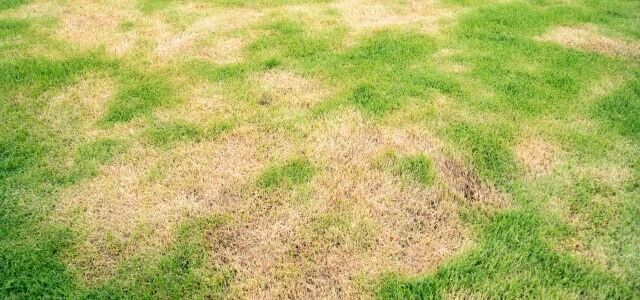Some things are as awful as they sound and Take-All Root Rot (or TARR for short) is one of them. Most prevalent during periods of prolonged rainfall such as summer to early fall when Florida receives the majority of its annual rainfall, TARR affects St. Augustine grass by attacking the roots and stolons, and if left untreated can cause significant damage. Since St. Augustine grass is the most commonly used turfgrass species on Florida homes, it is imperative to properly diagnosis this disease and develop a treatment plan to prevent turf loss. TARR also attacks Bermuda grass, widely used on golf courses, community entrances, common areas and around clubhouses.
Symptoms
Take-All Root Rot occurs naturally in the soil in Florida. Because TARR is a root disease, it does not attack the leaf tissue (blades), but will prevent the turfgrass from taking up water or nutrients from the soil, causing the blades to develop a chlorotic appearance. The blades will appear yellow or light green, but by this time, TARR has been active on the root system for up to three weeks or longer, and can progress into patches of thinning or dead grass if not treated timely. Disease development will persist especially when there are favorable conditions such as excessive soil moisture.
Management
Reducing or alleviating unnecessary stress to the turfgrass will help promote a healthier lawn:
• Avoid removing more than 1/3 of the leaf blade during mowing events when possible (could be difficult during rainy season due to excessive growth of the grass)
• Reduce irrigation frequencies and duration when soil moisture content is saturated
• Apply equal amounts of nitrogen and potassium nutrients in slow release forms (when permitted)
Mainscape utilizes integrated pest management (IPM) to scout and treat areas of TARR before they reach damaging levels. Our IPM Specialists are trained to apply the most effective products along with key nutrients to help the grass recover. Multiple applications may be necessary depending on severity. Follow-up treatments are typically scheduled 60 days after the initial treatment.
